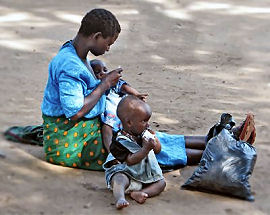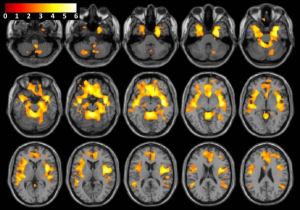
A new study conducted in sub-Saharan Africa found that bacteria living in the intestine are an underlying cause of childhood malnutrition, leading researchers to suggest that many infant deaths in the developing world could be prevented by simply altering microbial communities in the gut. The study, conducted in Malawi, was led by researchers from the Washington University School of Medicine and published in the journal Science.
Malnutrition is a common problem in Malawi, and while a poor diet clearly plays a critical role, it is not the only factor. Scientists have long puzzled over why some children are afflicted by the condition but not others, even those in the same household who eat the same foods. This has led to the realization that a lack of food alone cannot explain its causes.
The standard treatment for malnutrition is a nutrient-rich therapeutic food, which has helped to reduce deaths from the condition. But the new study shows that the therapeutic food only has a transient effect on the gut microbes. Once the therapeutic food is discontinued, the community of microbes in the intestine and their genes revert back to their unhealthy state.
This, the researchers suggest, may explain why many malnourished children gain weight when they are treated with therapeutic food but remain at high risk for stunted growth, neurological problems and even malnutrition and death after treatment is stopped.
For the new study, the researchers followed 317 sets of twins in Malawi for the first three years of their lives. During this time, half of the twin pairs remained healthy, and in the others, either one or both twins developed malnutrition. The researchers focused on the children who developed a form of malnutrition called kwashiorkor. The illness is associated with swollen bellies, liver damage, skin ulcerations and loss of appetite.
The researchers were particularly interested in twin pairs in which one twin remained healthy and the other became malnourished. This occurred just as often in fraternal twins as identical twins, pointing to a factor other than human genes.
Study leader Jeffrey Gordon and his team then looked to another source of genes – the microbial community in the gut. These genes play a vital role in extracting nutrients and calories from food, synthesizing vitamins and nutrients and helping shape the immune system.
In Malawai, the typical diet consists of a corn-based porridge that lacks sufficient vitamins and minerals. When a child in the study became malnourished, the standard of care was to give both twins the therapeutic food to limit food sharing.
This allowed Gordon to track the gut microbes just before, during and after treatment with the therapeutic food. While the food seemed to kick start the healthy maturation of the gut microbiomes of the severely malnourished children, its benefits were only temporary. Four weeks after the therapeutic food was discontinued, the gut microbiomes of the malnourished children either failed to progress or even regressed, while those of the healthy co-twins continued to mature on a normal trajectory.
Delving deeper, the researchers transplanted the gut microbes from healthy and malnourished co-twins into groups of germ-free mice that had been raised under sterile conditions.
The mice transplanted with malnourished children’s gut microbes and that ate a typical Malawian diet experienced substantial weight loss, while those that had the healthy twin’s gut microbes and ate the same nutrient-deficient diet did not. And although the microbiomes of the “malnourished” mice did mature when they were fed the therapeutic food, they tended to revert to a malnourished state when the village diet was resumed.
Looking more closely, the researchers found that mice with the gut microbes transplanted from a malnourished twin carried some species of bacteria associated with human illnesses, including inflammatory bowel disease. Moreover, the combination of a nutrient-deficient diet and a malnourished microbiome altered carbohydrate and amino acid metabolism, and reduced the availability of sulfur, which may contribute to weight loss. In addition, a central metabolic pathway for extracting energy from food also was disrupted.
“Energy metabolism may be a bigger challenge for these children when they are exposed to a nutrient-deficient, low-calorie diet,” Gordon suggests.
Moving forward, the researchers plan to conduct additional studies to further define the role of the gut microbes in severe malnutrition and explore ways to permanently repair the gut microbiome. “We are also exploring whether it is possible to supplement the therapeutic food with beneficial gut bacteria from healthy children, as a treatment to repair the gut microbiome,” Gordon said.
Related:
Discuss this article in our forum
Tackling obesity by manipulating gut flora
Novel psychiatric drugs aimed at gut bacteria
Synthetic poo touted as solution to gastric woes
Infant formula found to compromise immune system


















Comments are closed.